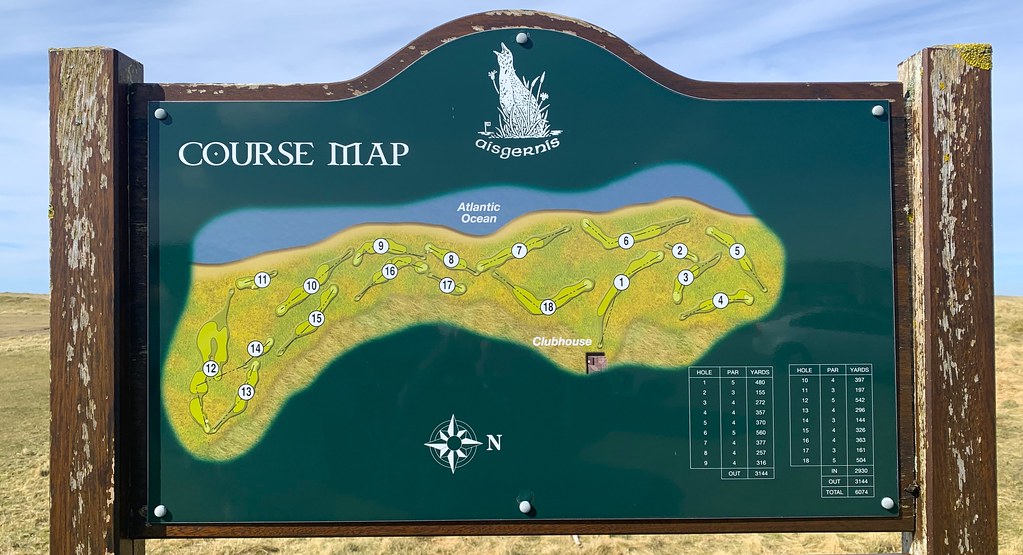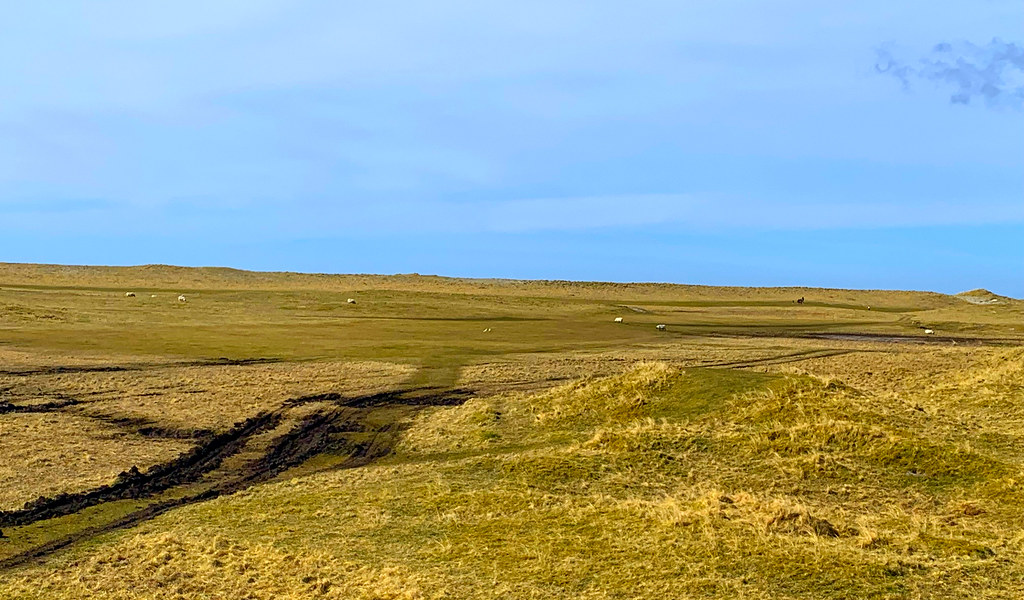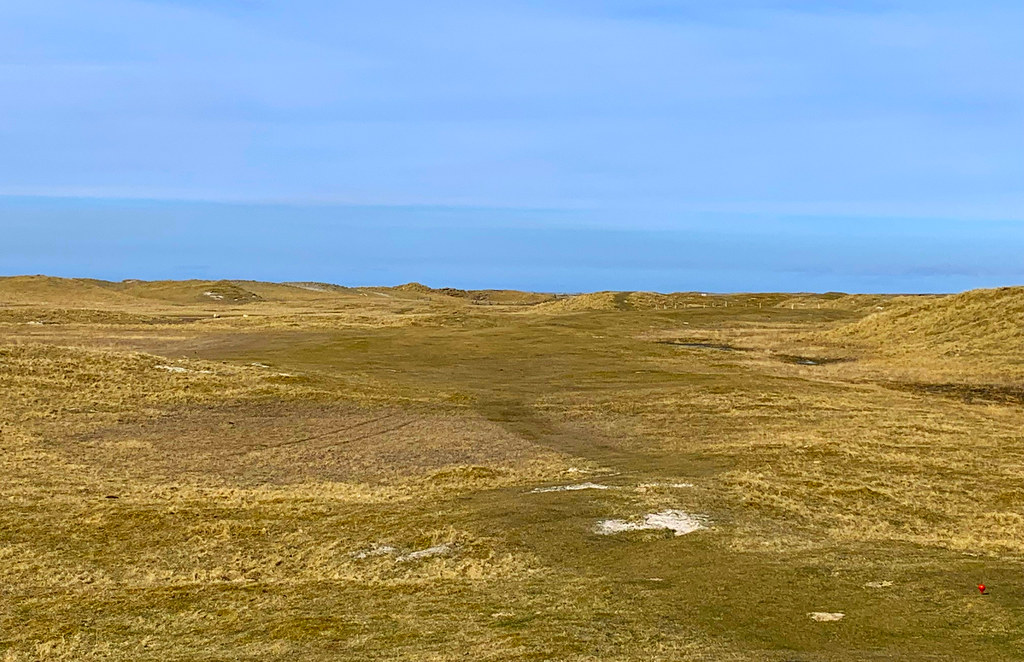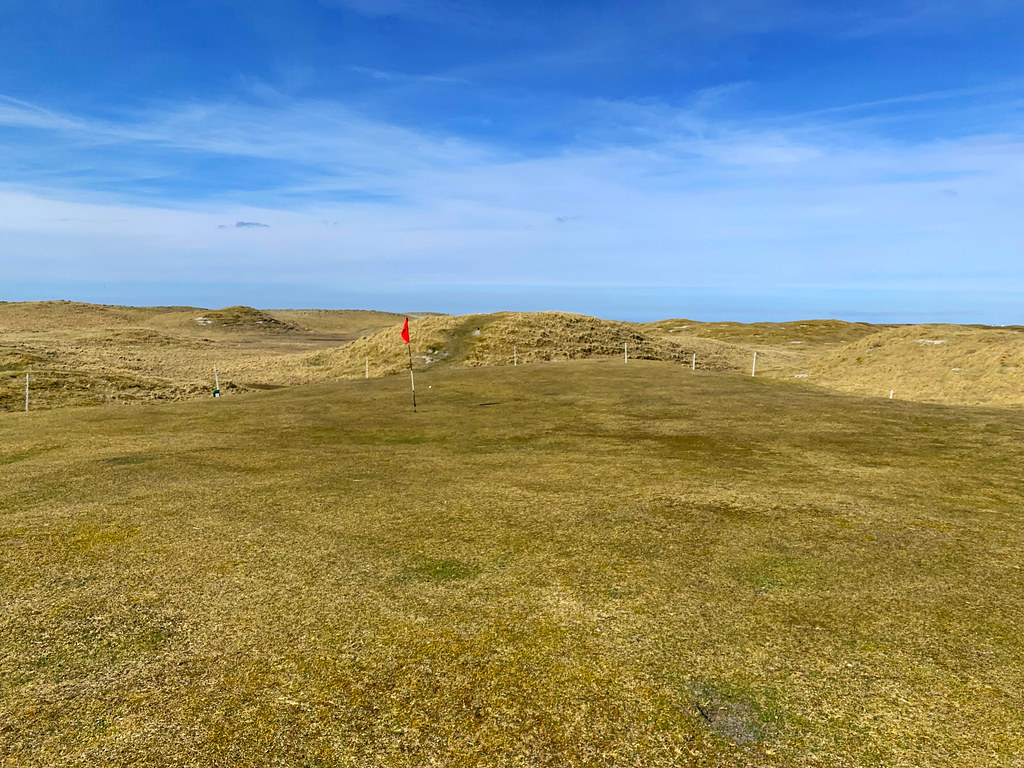Many people thought I was not right in the head for organizing an Outer Hebrides trip during March/April, but needs must. We figured it’s just as easy to catch horrible weather in June as it is in March. Besides, I have a healthy dislike of midges and will happily sacrifice warmer weather for the absence of such. The Winter Tour continued from Turnberry north to Oban for the night. From there we travelled further north to Mallaig, where we caught a ferry to Lochboisdale on South Uist. Our longest ferry journey covered without incident had us looking sideways at one another with relief. The weather was sunny, but decidedly chilly and it felt more so with a significant northerly wind. Of course, our reason for being on South Uist was to play Askernish.
Lochboisdale

Originally designed by Old Tom Morris in 1891, the course was partly a means to lure well connected tourists to the this Hebridean outpost. By the early 1920s crofters claimed the land for daily use and that seemed the end of the course. A 12-hole course was laid over the flatter land adjacent to a new airfield built in the mid-1930s. Air service was short-lived when Benbecula became the primary airfield for the islands. With a Ministry of Defence Rocket Range opening nearby in the 50s, the fortunes of Askernish were back on the rise. Things went swimmingly with military personnel about. A new 9-hole course was laid out in 1970. About 10 or so years later construction work dried up and so did interest in Askernish. The club and course only just survived until the 90s. Recently retired Colin MacGregor arrived in 2002 and tended to the course. Evidently his fervour was such that other locals became interested in the fortunes of golf on South Uist.
By chance, Gordon Irvine called the club Chairman, Ralph Thompson, in 2005. Gordon was initially seeking a getaway holiday and was intrigued by a course he never heard of…especially one with OTM pedigree. Gordon visited the course in 2005. During that time, he walked the course with R Thompson and now greenkeeper, Colin MacGregor. Gordon had seen enough. He would return in March 2006 with Martin Ebert, Chris Haspell and Adam Lawrence. Martin Ebert developed a plan along the lines he thought OTM might have followed. This plan was the impetus for the course we know today. The plan was modified here and there, but it was the industrious efforts of MacGregor and other locals which shaped the plan into a course which properly opened in 2008. Many others have contributed time and money into the project which allowed for improvements, but the list is too long for this tour.
There are no artificial fertilisers or herbicides used, just as was the case 135 years ago. The course is grazed by cattle and sheep, just as was the case 135 years ago. To date, it isn’t known how much OTM work remains, but that fact is largely irrelevant. The focus should more rightly be placed on what exists. Askernish is a design of unmatched character with some of the most provocative holes and greens in Scotland. It is unnecessary to dwell over the OTM history. Askernish is what it is.

The fairly new house does the job.

Walking to the first tee I spied a tell tale sign of grazing animals...a stock grid. Although, at Askernish it doesn't take long to find cattle. Their presence essentially created a dogleg for the opener. Before teeing off I had a look at the course map. It was evident that a significant section of the course wouldn't be in the dunes. It turns out 1-6 and 18 are on the flat machair section of the property.

The opening tee shot. There must be a natural pocket wetland on the right. Cows hang out around this area making it a lost ball zone. There are a surprising number of these wetlands throughout Askernish.

The hole isn't impressive until reaching the green. With the exception of the 18th, the greens are small, contoured and/or sloping.

The cattle remain an integral part of the course on the short 2nd.

An odd hole, the third is a short par 4 which legs left. For those long enough, a direct line at the green can be taken. I am sure that in summer months with the rough up this option would be far more risky. Turning back on ourselves, the 4th is the highlight hole of this section of the course. Again, the drive is not well defined because of the lack of rough, but there are pocket wetlands which can consume a ball.

The approach.

A very cool raised green with sharp drop-offs.

Behind the 5th green, pasture golf for sure. A farmer started a fire I believe to burn out ticks which cause grief for sheep. The smoke billowed over the course for the remainder of the day. Unfortunately, this fire got out of control and by nightime several hills were ablaze. Fire engines were called to the scene, but I don't think there was much that could be done if the situation became highly serious.

Another three-shotter, the 6th turns right up the duneside. These sand scrapes in the fairways are somewhat common. Luckily, I only found one during the round and didn't do well trying to cope with it. Askernish is rustic!

The front left of the green...a nasty hole location. For some reason this green was far sandier than the others. My mate Dave is in the background. The incline to the green is much sharper than this photo indicates.

More to follow.
Ciao